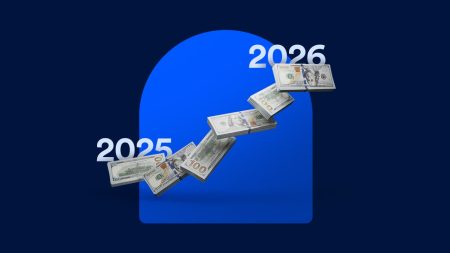Key takeaways
- The federal government has strong collection powers for defaulted federal student loans, such as Administrative Wage Garnishment.
- Borrowers have rights to appeal wage garnishment and protection against employer retaliation.
- Borrowers should update their contact information and explore options for getting out of default by contacting the Default Resolution Group.
The U.S. Department of Education announced on April 21, 2025, that it would restart enforced collection of defaulted federal student loans on May 5, 2025, for the first time in five years.
During the pandemic, the Coronavirus Aid, Relief and Economic Security (CARES) Act not only paused payments and waived interest on federal student loans, but also suspended involuntary collection of defaulted federal student loans. These provisions were extended multiple times, and then followed by a 12-month on-ramp that retroactively placed delinquent loans into a series of 3-month administrative forbearances. This ended on September 30, 2024.
Of the 7.7 million borrowers who were in default prior to the pandemic, 5.3 million remain in default. If you are among them, you should know that the U.S. Department of Education has very strong powers to compel repayment of defaulted federal student loans. These include Administrative Wage Garnishment and the offset of income tax refunds and Social Security disability and retirement benefit payments.
Make sure you understand how wage garnishment works and what you should do if you receive a notice.
How does Administrative Wage Garnishment work?
1. The ED sends a notice
Administrative Wage Garnishment typically begins after a 30-day notice to the borrower. If you have a serious delinquency or are in default on your federal student loans, update your contact information with the U.S. Department of Education and your loan servicer to ensure you receive any notices concerning your debt.
The wage garnishment notice will be mailed to the borrower’s last known address. The U.S. Department of Education does not need the borrower’s current contact information to start wage garnishment, as they can get the name of the borrower’s employer through tax records. The wage garnishment order will be sent to the borrower’s employer.
2. Employer begins withholding wages
Once AWG begins, the U.S. Department of Education can require employers to withhold up to 15 percent of a borrower’s disposable pay to repay defaulted federal student loans, without needing a court order.
Disposable pay refers to what’s left of the borrower’s wages after deducting health insurance premiums and any amounts required by law, such as taxes. After garnishment, the borrower must be left with at least 30 times the federal minimum wage per week (currently $217.50). This is intended to ensure that the borrower can pay for basic living expenses.
If the borrower is already subject to garnishment for other reasons, the combined garnishment amount can exceed 25 percent of disposable pay.
Can I be fired for having my wages garnished?
Federal law protects borrowers from employer retaliation. An employer cannot terminate or take disciplinary action against an employee solely because of Administrative Wage Garnishment. Should an employer retaliate, the borrower can file a lawsuit seeking attorneys’ fees, back pay, reinstatement and punitive damages.
3. Garnishment continues until the owed amount is repaid
Garnished amounts are applied first to collection costs, then to interest and finally to the principal balance of the defaulted loans.
Wage garnishment continues until the entire amount owed by the borrower, including interest, penalties and collection costs, is paid in full. If any excess amounts are garnished, they will be refunded to the borrower. However, the ED does not pay interest on such refunds.
How borrowers can respond to an Administrative Wage Garnishment notice
Borrowers have options for avoiding Administrative Wage Garnishment if they act quickly.
Look out for collections scams
Borrowers who are in default should beware of student loan scams. Some scams will pretend to be debt collection agencies and demand hundreds of dollars from the borrowers’ wages. Wage garnishment orders are sent by the federal government to the borrower’s employer, not the borrower. You can verify suspicious demands for payment by contacting the Default Resolution Group at the U.S. Department of Education.
Request a hearing
Borrowers who receive a notice of Administrative Wage Garnishment should ask to see records relating to their debt, to ensure that the balance due is accurate. They should also evaluate whether they have grounds for an appeal and promptly file a request for a hearing before an administrative law judge if so.
If this request is filed within 30 days of receiving the garnishment notice, the hearing must occur before the wage garnishment order is issued. For requests filed after the 30-day window, the hearing may take place after the garnishment begins. The hearing official is required to issue a final written decision within 60 days of the petition’s filing date.
If an appeal is granted, it usually results in a temporary suspension of the wage garnishment, so the borrower may need to submit an appeal annually.
Enter a repayment agreement
If the borrower has Direct Loans, the borrower can enter into a loan repayment agreement or loan rehabilitation agreement with the U.S. Department of Education’s Default Resolution Group. If the borrower has FFEL program loans, the borrower can make arrangements with the guarantee agency that holds the borrower’s defaulted loans.
Keep in mind: Entering an agreement and making your first payment within 30 days of the date listed on your notice will prevent wage garnishment.
Rehabilitate defaulted loans
You can return the loans to a current status by rehabilitating them. Entering a rehabilitation agreement and making your first payment within 30 days of the date listed on your AWG notice will prevent wage garnishment.
Keep in mind: If garnishment has already begun, it will continue until you complete loan rehabilitation.
There are two methods of rehabilitating defaulted federal student loans. One involves making 9 out of 10 consecutive, on-time, full, voluntary, reasonable and affordable payments as part of a loan rehabilitation agreement. This type of rehabilitation removes the default from the borrower’s credit history.
Removing the default from the borrower’s credit history will make it easier for them to get a credit card, auto loan or mortgage.
Consolidate the defaulted loans
A quicker method to remove loans from a defaulted status is to include them in a Federal Direct Consolidation Loan. Consolidating your defaulted student loans restores them to a current status immediately and stops wage garnishment.
However, this method has a few drawbacks:
- Consolidation adds the interest and collection costs to the loan balance.
- Consolidation does not remove the default from the borrower’s credit history.
- The borrower may be required to repay their loans under an income-driven repayment plan.
Learn more
If you have questions about your student loans, you can call the Federal Student Aid Info Center (FSAIC) at 1-800-433-3243.
If your loans are in default, contact the Default Resolution Group at the U.S. Department of Education at 1-800-621-3115 or visit myeddebt.ed.gov for guidance about getting out of default, rehabilitating federal student loans and wage garnishment.
Why we ask for feedback Your feedback helps us improve our content and services. It takes less than a minute to complete.
Your responses are anonymous and will only be used for improving our website.
Help us improve our content
Read the full article here












